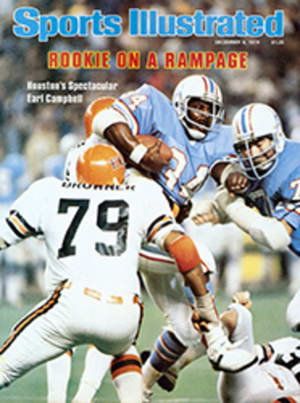
She's tumbling to the top
When a big-eyed sprite named Marcia Frederick stepped out to perform at the world gymnastics championships in Strasbourg, France in October, the arena all but crackled with anticipation. Which seemed strange, since her name was not Olga, after all, nor Nadia nor Ludmilla. This was only Marcia's second international competition and she came from Springfield, Mass. in the U.S.A., which has never rivaled the U.S.S.R. or Romania in the production of world-class gymnasts. But the event was the uneven parallel bars, and on the basis of this 15-year-old's performance the day before, some of the gathered experts were already calling her bars routine the most extraordinary that has ever been executed. No one wanted to miss her final.
As the green light flashed, she grabbed the low bar and thrust to a handstand on the one above; few could believe what followed. She arrowed her legs back to a pike position and dived around the bar in something known to gymnasts as a Stalder shoot. Just before completing her circle, she twirled in a full pirouette, perpendicular to the bar, grabbing and letting go with her hands as she went. The two maneuvers, the Stalder and the pirouette, took barely a second, but it was the only such second in history; no woman had ever combined the two moves.
The remaining 20 seconds of Frederick's masterwork were merely superb. Only her dismount was less than perfection, perhaps because of a weak left ankle, sprained three times since August. A score of 9.95 went up, and by day's end it had not been surpassed. Marcia had a gold medal, the first ever for an American woman in world gymnastic competition. Even the Russian sportswriters were moved to comment that Frederick had "truly won," that, indeed, she had "approached perfection."
Her routine over, Frederick sat on the floor and waited for competition to continue. Still to come was defending world uneven champion Nadia Comaneci. Comaneci had scored a perfect 10 at Montreal, but on the previous day, during the individual combined exercises event at Strasbourg, she had fallen during her routine and was given a 9.25. Now she came sauntering toward Frederick, and as she passed she wet her hands from a water bottle and flicked a shower of drops in her new rival's face. "Was that intentional?" someone asked Frederick. "Could be," she replied, and watched, a big grin on her face, as Comaneci scored a 9.85.
But when a friend said later, "How great! We finally won a gold!" Frederick replied, "Yeah. Now I've only got three to go." She had failed to qualify for the finals in floor exercise, balance beam and vaulting. Though the bad ankle had meant that for five weeks before the championships she had been able to do no floor exercise, limited beam work and only a few vaults, she seemed more than disappointed with herself when she said, "This was a good start, but I want to be an all-around champion."
Then she went off to place an overseas call to her family. When she finally got through, her father said, "Hi, Marce, how are you?"
"Pretty good," she said.
"Have a good day?"
"Pretty good."
"What do you mean, 'Pretty good'? You competed today, didn't you?"
And America's answer to Nadia Comaneci replied, "Well, I won a gold medal in the bars, but you should see the beautiful T shirt I bought you."
Not a gushy kid. So it comes as no surprise that Marcia Frederick is not a product of Olga Korbut fever, was not star-struck into gymnastics. At 10 she happened by the Y where her dad played a little basketball and saw "a bunch of kids jumping around and stuff." For a year she jumped around and stuff, too. When the Y coach, Leo Leger, opened a gymnastics school, Frederick enrolled. She would arrive each day at one o'clock for her workout, and before long Leger was getting calls from his wife at 10 or 11 p.m., reminding him that his young student needed her sleep, and that she needed her husband. "Even when Marcia was 11, I knew she could be world class," Leger says, "and that was all she wanted, even then."
When only three years later she did burst upon the international scene, it seemed so abrupt that even in the gymnastics world some wondered where on earth she'd come from. For anyone who knows Muriel Grossfeld, it is a temptation to say that Marcia sprang complete from Muriel's forehead. The young girl, with her talent, courage and extraordinary dedication, was precisely what the fiercely dedicated 38-year-old gymnastics coach had long dreamed of: someone to prove what the United States could do in world gymnastics. That sounds unfair to Frederick, who for years had done nothing with her waking hours but earn academic A's and practice gymnastics. But by the time Frederick and Grossfeld first met in Lowell, Mass. in 1976, Leo Leger had to admit, "There was nothing more I could do for Marcia. She needed someone like Muriel."
Not that there are very many like Muriel Grossfeld. She won 18 national championships, eight in the floor exercise. She made three Olympic teams and coached the Olympic women in 1968 and 1972, but never won a medal, and for years her goal has been to find and train the American girl who would. "I saw exactly what was needed," she has said, "a good training facility, and a political structure." So 10 years ago she opened a gymnastics school in New Haven, Conn.
When she met Marcia in Lowell in 1976, Grossfeld recalls, "Several coaches had told me that Marcia was trying things beyond her ability, practically killing herself. But she reached me with that energy. Her techniques were poor, but she drove herself so hard, especially in the floor exercise, that it often caused her to score higher than she really deserved."
Soon afterward Grossfeld opened the Muriel Grossfeld School of Gymnastics, Inc., in Milford. Conn., with a fully equipped gym, coaching for elite-class women gymnasts and room and board for a select few girls 50 feet away in an old farmhouse. There she is now director of a considerable staff, but does all the choreography for floor-exercise and balance-beam routines herself. In June 1977 she held a clinic at Milford that drew young gymnasts from seven other states. Marcia Frederick attended, and liked what she saw. She realized that Leo Leger was not equipped to train her for world-class competition; she needed dance instruction for her floor exercise and skilled coaches to correct mistakes she knew she was making. Marcia, who is close to her parents and two sisters, took several days to think it over, but in July she moved to Grossfeld's and entered nearby Laurelton Hall, a private school, where she is now a junior. Ten other girls, ranging from 12 to 16, are enrolled in the School of Gymnastics' elite program, among them Leslie Russo of Durham. Conn., who qualified for the world championships but came down with mononucleosis and was unable to compete.
Each girl works out six hours a day, five days a week, including an hour and a half for warming up. The scene each afternoon is reminiscent of Leningrad's famed Vaganova Choreographic Institute, the young girls respectful and quiet. Grossfeld and company very much in charge. There is little time for anything but quick meals, workouts and homework. But when Frederick is asked if she misses dances, football games and parties, she replies, "This is my life. I committed myself to it five years ago, and all I want is to go as far as I can."
In May this year Marcia scored a perfect 10 in her uneven parallel bars routine at the U.S. championships, which no other U.S. woman has done in national competition. There is a saying in gymnastics, "They ought to give her the bars," and that day in Long Island's Nassau Coliseum they did, dismantling the apparatus and presenting it to Frederick and her coaches. USGF Technical Director Mrs. Jackie Fie wrote in the USGF News, "The exercise...was in my opinion the most difficult and perfectly performed routine that I have seen in the world in this event." Marcia had managed it after only two weeks of practice.
In June, Frederick made her international debut at Bulgaria's Golden Sands Invitational meet. She won the gold medal in the all-around competition, and individual golds in the vaulting and uneven parallel bars. Her bars routine, rapidly becoming something of a legend, won a special award as the outstanding performance of the meet.
Following the competition in Strasbourg, Frederick's father had observed, "Marci is extra shy and modest. All she wants is to get back to the gym and start working out again." She did pause for a victory dinner in Boston with her family, adding a five-pound lobster to the 94 pounds on her 5'1½" frame. Then she was back at Grossfeld's, where there is a scale on the dinner table to help ensure that no girl eats more than five ounces of meat at any meal.
"In a year or so," says Frederick, "everyone will be doing the Stalder. Look at the Tsukahara vault. When Comaneci did it in 1976, it was sensational, but today it's fairly common."
"You can't stand still in this sport," Muriel Grossfeld says. "Marcia's tumbling skill now, for example, is as good as Nadia Comaneci's was in Montreal. But they're doing such amazing things in tumbling that at Moscow in 1980 she may have to settle for just being a finalist in the floor exercise. She always had potential in vaulting, but she came here thinking her balance beam would hold her back in the all-around. Now we're so enamored of her beam work we feel she might be great there, too.
"But her bar routine, well—Nadia scored a 10 at Montreal and I cheered, though I knew it would be done better someday. With Marcia, I don't see how. We have this word 'swingfulness,' and she epitomizes that quality more than any other lady gymnast in history. I've never seen a girl so swingful. With that softness at the top of her swing, she brings tears to the eyes of the gymnastics technicians here.
"What Marcia has done is to open up a whole new world for girl gymnasts in this country. For most of our girls, making the Olympic team has been an end in itself. We have never felt we could do more than just participate. But now Marcia has let us know we can be full-fledged competitors. She's the first American world champion, and there'll never be another like her."
Says Marcia Frederick, "Muriel taught me how to learn." And then she goes off to learn some more.
PHOTO
On the uneven parallel bars, Marcia's routine is unparalleled.

